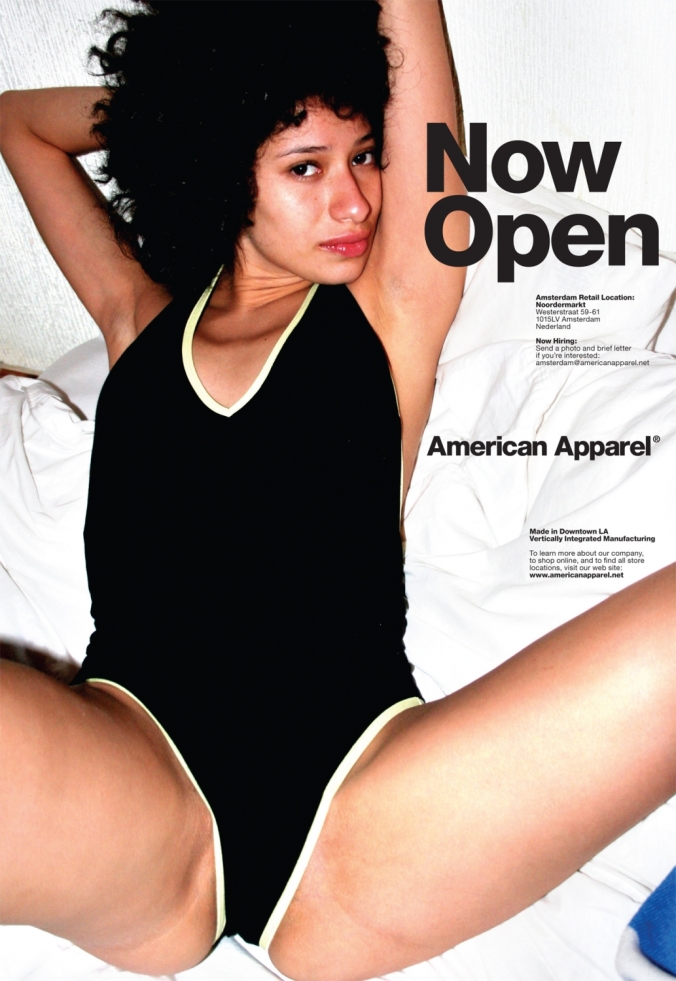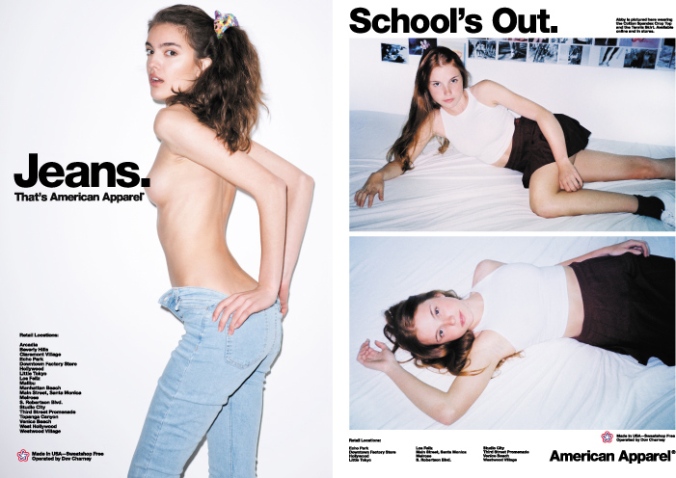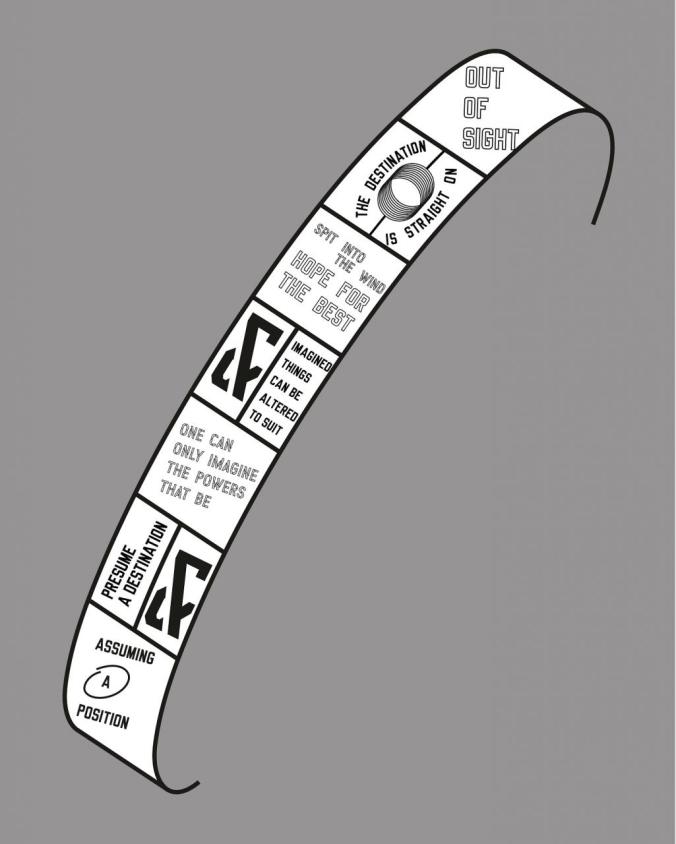Last November, American Apparel closed all the stores in Australia. The brand, which is known of sexual advertisement, announced bankruptcy at last.
Young girls and tempting expression, they are two key elements in their poster and advertisements. Such as this one below, the woman in the poster lying on the ground and spread her legs, looking at the audience directly. The words “Now open” stays in the right top corner. So what exactly is “open”?

Image 1 Now open
As a clothing brand, American Apparel focuses on human figure more then their clothes. Their designs are based on the 80th American pop culture. Honestly, their clothing are not that unique, even you can find similar product in any store on the street. But people will still buy their products. Should beauty be sexualized? Or should women play the roll of sexual to grab attention?
Cheryl Buckley mentioned: “Advertising serves to enforce the meaning of design as defined by the designer or manufacturer.”[1] In American Apparel’s advertisement, women are just like objects to attract the audience. They are natural, instead of hiring skinny and pretty young girls, the models are just like everyone else around us. “Advertising creates both ideal use for product and ideal user.”[2] In this advertisement below, the model is even half naked on the left poster. And on the right panel, the model lies on the bed, seems waiting someone. Words “School’s out” are right beside it. What does the poster try to express? The human figure or clothing? Beauty does not equal to sexual behavior.

Image 2 Jeans and School’s out
We cannot say the poster is a bad design. “Exclusive definitions of good and bad design are constructed, based almost entirely on esthetics. These definitions serve to isolate design products from material and ideological conditions of production and consumption”[3], said Cheryl Buckley. But female shouldn’t be defined as sex tools and relying on male. Although American Apparel declared that they are just using natural body to advertise, they are still be considered that trying to use sexualized poster to attract their customer, and it won’t last long. Some country even banned their advertisement for they think it will cause negative infection to their society. In contemporary society, women are not objects to show or grab attention, and sexual poster and advertisements will no longer be useful to attract customers. Designs should base on proper esthetic according to the contemporary society.
[1] Cheryl Buckley, ‘Made in Patriarchy: Toward a Feminist Analysis of Women and Design,’ in Design Discourse: History/Theory/Criticism, ed. Victor Margolin. Chicago and London: The University of Chicago Press, 1989, 251-62.
[2] ibid
[3] ibid
